Hidden Gems in Italy: Insider View of Calabria
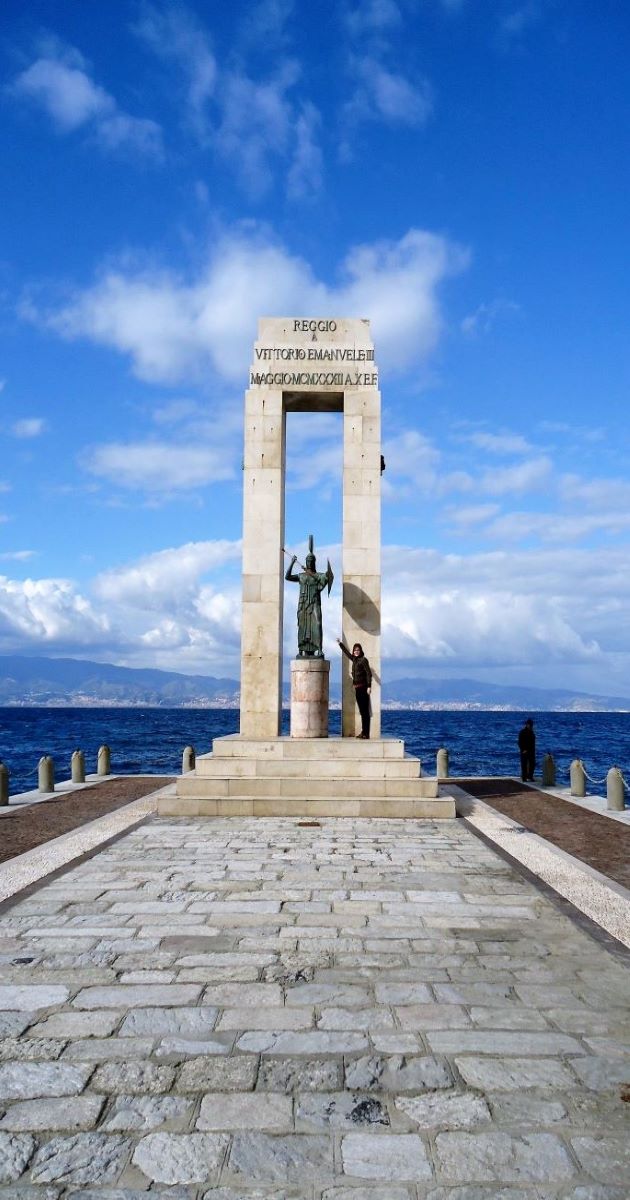
Calabria is the southernmost region of mainland Italy, the “toe of the boot”.
In my personal opinion, Calabria, along with Sicily, are the most beautiful regions in Europe. The landscape is wild, the beaches are beautiful. Everywhere you go, you will find the hidden gems of Italy: cozy, pretty towns.
It is a bit off the beaten track because the 3 airports of the region are domestic ones. Only Lamezia Terme has 6 international routes. The highways south of Naples are in constant construction, and therefore driving there can be painfully slow. The Northern Italians regard the Southerners as some kind of barbaric tribes. The nickname of the Southern regions is Africa (no kidding).
The mistreatment of the region created a specific catch-22. The facilities of the place are not yet exploited. There are few hotels, restaurants, shops, and programs for attracting guests. Since there are no such opportunities, tourists rarely visit this area, and since there are no tourists, there is no demand for new places.
But if you want to avoid the tourist hoards of Venice and Tuscany, yet enjoy true Italian cuisine, historical sites, and pristine beaches, Calabria might be your favorite place.
Here are my choices.
Reggio Calabria
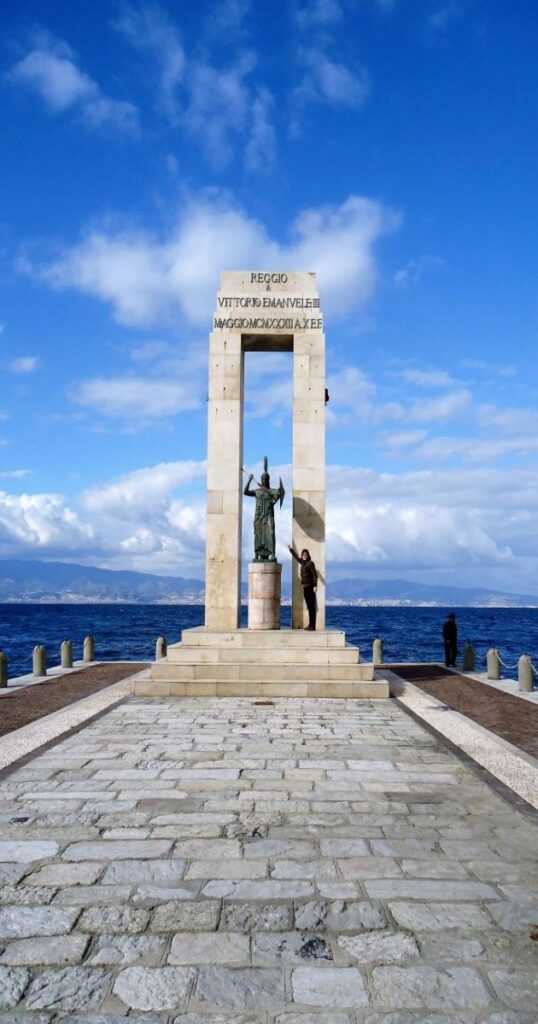
This important city of Calabria is located on “the tip of the Italian boot”, on the shore of the Strait of Messina, opposite Sicily. The photo was taken at the Reggio Calabria seafront promenade (lungomare).
I am standing in front of the statue of Emmanuel III.
According to an Italian poet, this promenade is the most beautiful kilometer in Italy. You can also experience an optical phenomenon, the so-called Fata Morgana from the Reggio seaside. Fata Morgana occurs when layers of hot and cold air refract the light in a way that objects seem to be a lot closer than they really are. It is not a very common occurrence, so you have to be in the right place (Reggio seaside!), and time (good luck with that) to see it. I have never had the luck to experience it, but those who have say that the houses of Messina, Sicily appear so close that you feel you can nearly touch them
Its geographical location makes Reggio Calabria also an important transport hub between Sicily and mainland Italy.
Reggio is also knowns as the “city of Bronzes”, after the pair of statues of Greek warriors, the Riace Bronzes. The full-size sculptures are testimonials of the ancient Greek past of Calabria.
Tropea and the hidden jam
When I said beautiful beaches, I meant Tropea. I will let the pictures speak for themselves.

The Rock at Tropea 
The beach at Tropea 
A vintage photo on the beach in Tropea
Tropea is famous not only for its cristal clear beaches but also for the onions. They make jam (hidden jam, sorry, I couldn’t resist making this terrible pun), ice cream, bread, and cakes from red onions. (It is called cipolla rossa in Italian and cipudda rossa in Calabrian dialect).
Speaking of food, I would note another oddity as well. The Italians are famous for their ice cream, (gelato). However, in Tropea, and in Southern Italy in general, gelato is served in pastries, and not from a cup or cone. The pastry – brioche – holds a ridiculously large portion of ice cream, not measurable in mere scoops.
Scilla
Scilla is a small town on the shores of the Strait of Messina. Its name originates from Scylla, the monster of Greek mythology. According to Homer, ancient sailors had to choose from two bad options. They either sailed close to the monster on the shores of Calabria or approached another monster, Cariddi, at the Sicilian shore of the Strait of Messina. Hence the saying: “between Scylla and Charybdis”.
Today, Scilla is a very underrated tourist destination, truly a hidden gem in Italy.
It is a charming fishing village, with colorful houses overlooking the Tyrrhenian Sea. The vista of the village is dominated by the Scilla rock and Castello Ruffo sitting on the top.
The image shows the rock, which, due to its proximity to the other side, may have been the starting point for the spread of the legend.

The Rock of Scilla 
Castello Ruffo, the fort of Scilla
The main attraction of Scilla is the beach. It is part of the Costa Viola. The water here is not blue, turquoise, or green, but apparently purple. Well, I haven’t experienced that, but I haven’t been here in the summer. At this point, the beach is crowded, and obviously, there is no need for a sweater.
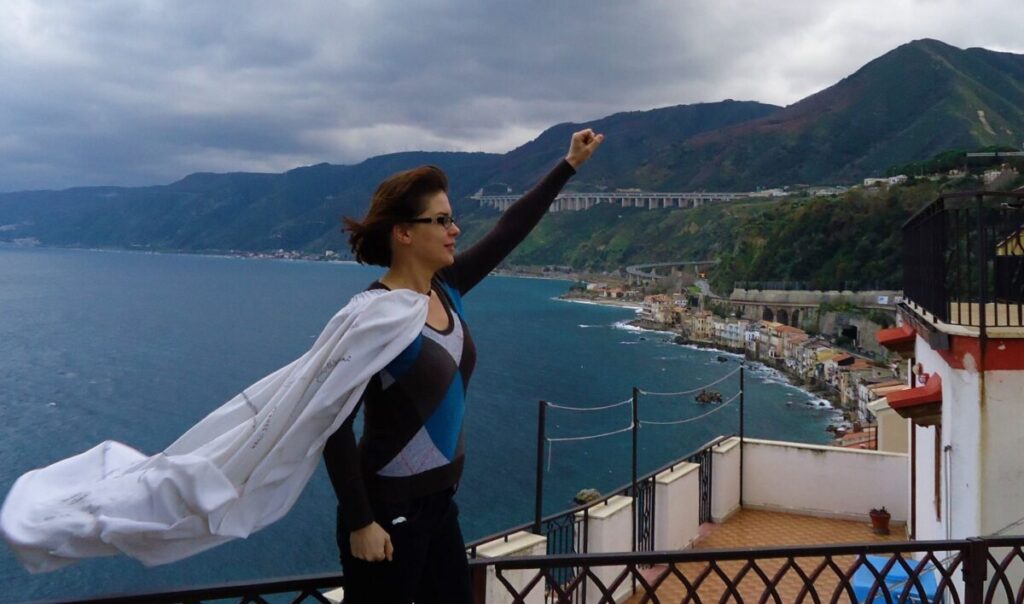
Gambarie
I am Hungarian, I am from a landlocked country, so I have always envied those who live by the sea. They are the lucky ones who spend their lives in the beautiful places that I only visit during holidays. During the grey winter months of Eastern Europe, or on the dog days of the summer on the melting concrete, I always used to dream of how good it would be on the beach.
And then, I moved to Calabria and joined the lucky people. The Calabrians live in a place where they constantly stumble into the sea. They look out the window, and the sea is there. Morning commute to work, and they drive down the coastal road. Time to have a beer, and the pub is on the beach. Boooring.
Luckily, Calabria is not only about beautiful beaches. One of the most popular places among Calabrians is Gambarie, a ski resort in the Aspromonte mountains. Here, they can go hiking, walking, and skiing, instead of paddling. When we first swam in the sea at Tropea, we boasted about it in text messages to everyone we knew. A Calabrian friend wrote back that at the same time, he was skiing about 12 miles away, in Gambarie.
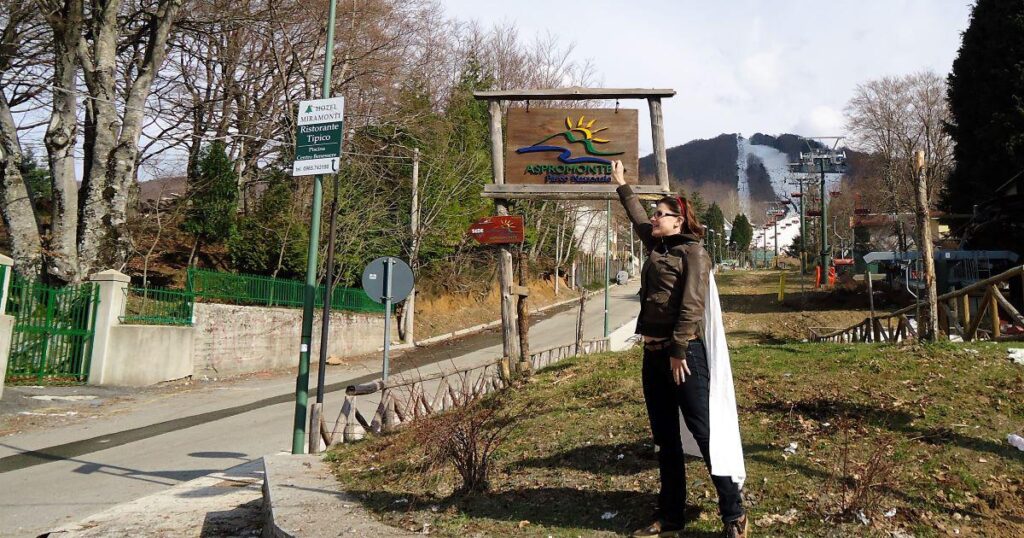
Pentedattilo
Another popular hiking spot in the Aspromonte mountains is Pentedattilo.
It is the ghost village of Calabria. After devastating earthquakes, Pentedattilo was deemed uninhabitable and became abandoned in the 1960s. More recently, volunteers from all over Europe repopulated the characteristic settlement of the deep South. They transformed the old buildings into traditional craftshops.
Pentedattilo also preserves an even older aspect of the history of the region. From around the 8th century BC until the middle ages, Calabria was part of Magna Graecia (Greater Greece). The settlers created a unique culture combining Greek, Byzantine, and Roman elements. Their language was Griko, which was spoken here until the 19th century.
Pentedattilo is named after the rock formation that can be seen in the background. If you look at the pictures and we have a little imagination, you will notice that the rock has the shape of a hand. Pentedattilo in fact derives from the Greek: penta + daktylos, indeed five fingers.
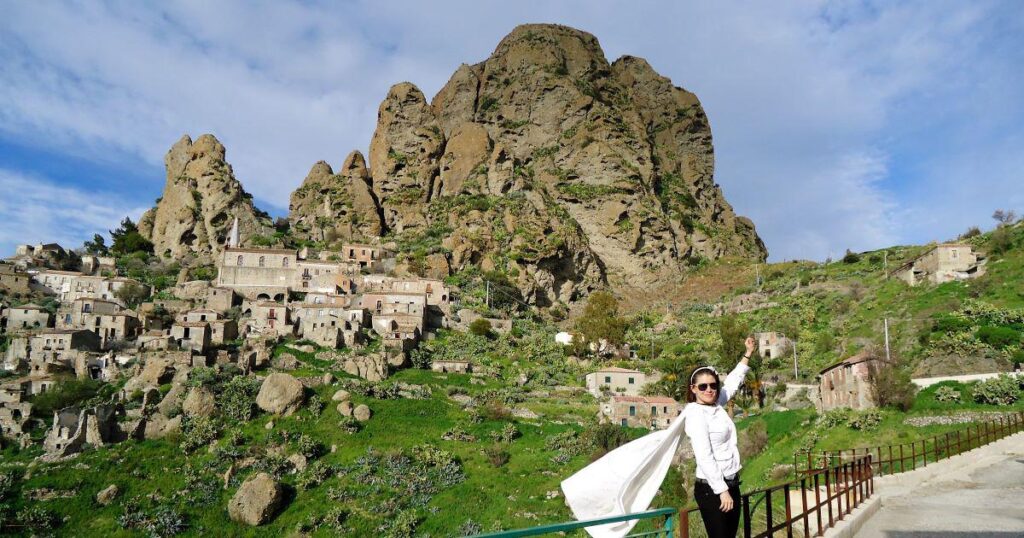

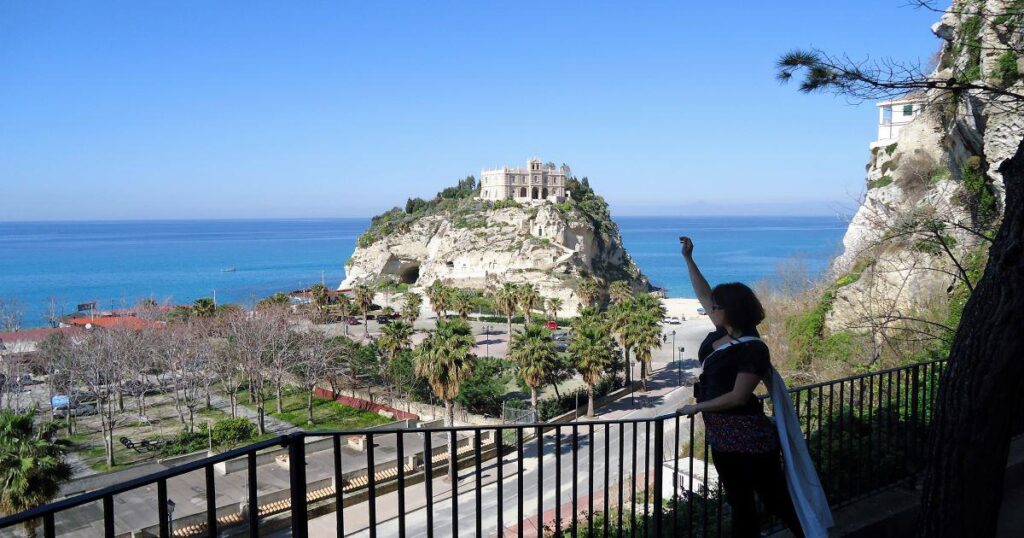
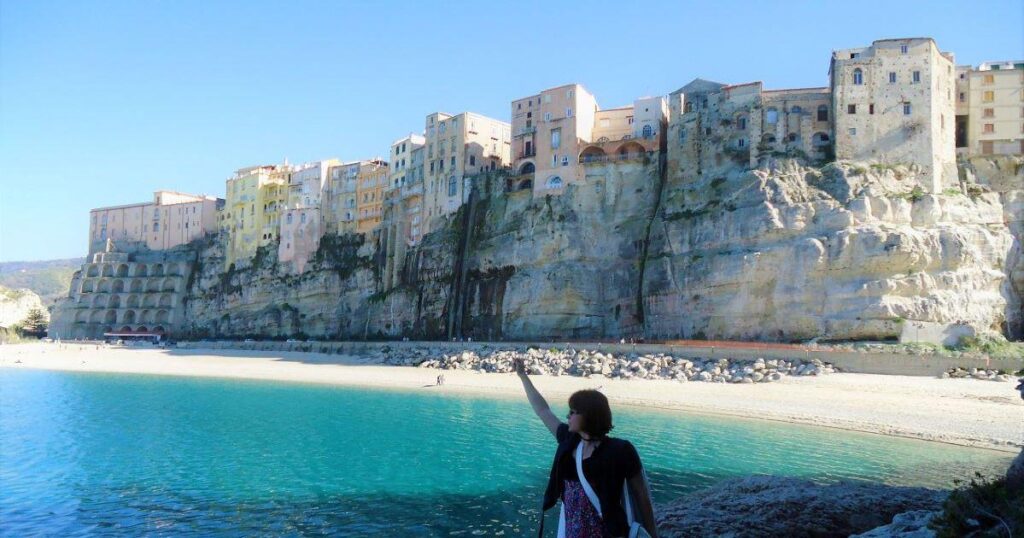
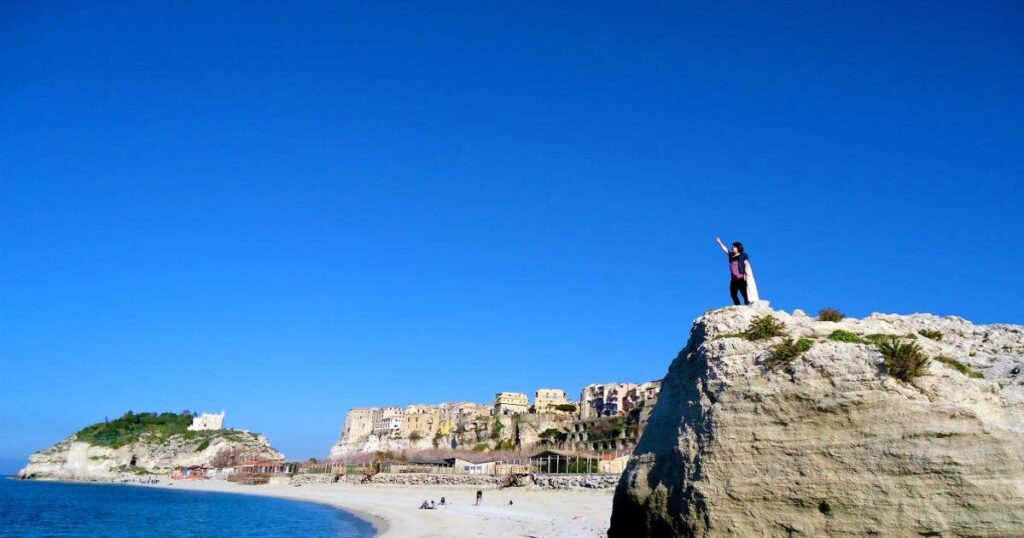
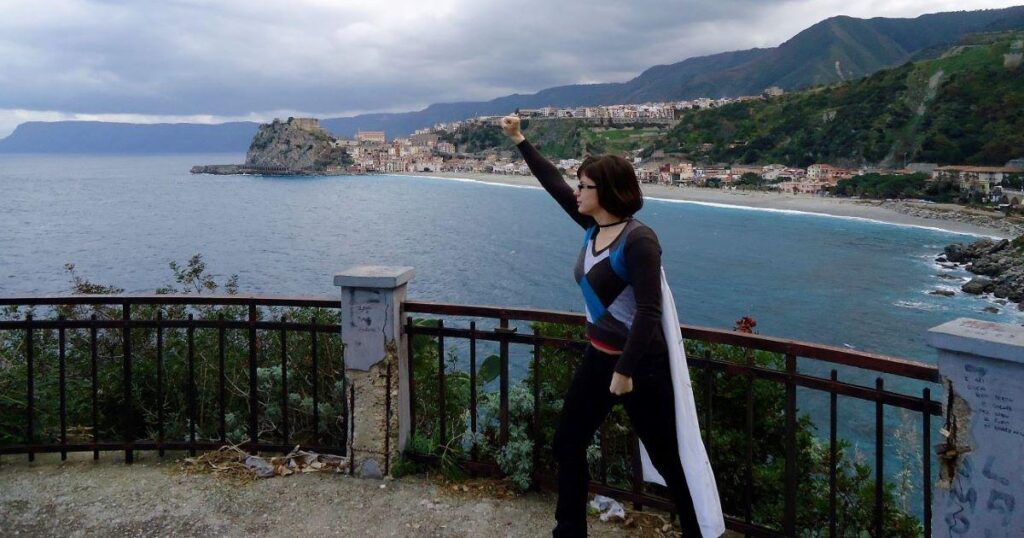
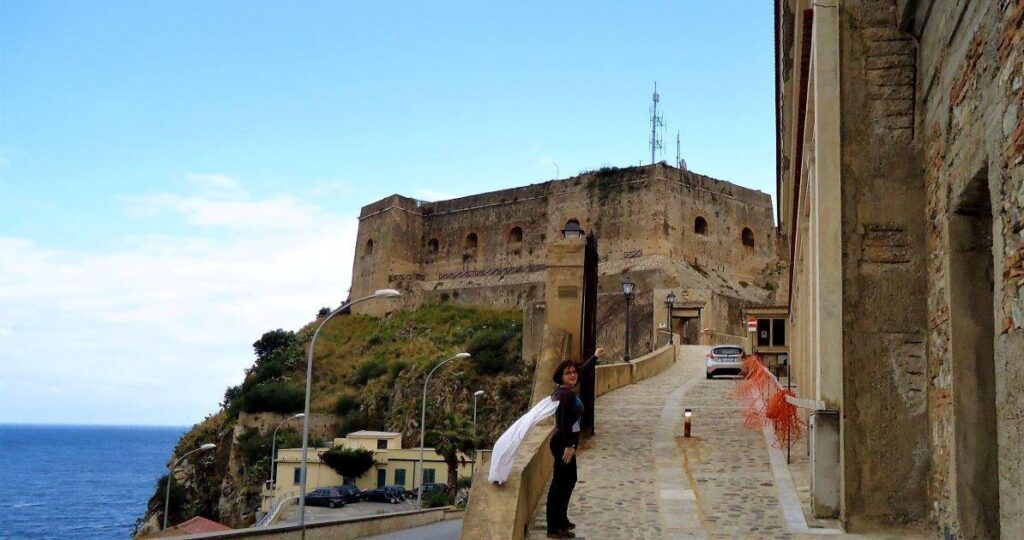

Thank you for introducing Calabria. The fact that it only has airports for domestic flights is probably a blessing and makes it so much more authentic. Btw, I love your supergirl photos!
This is a very beautiful side of Italy. Castello Ruffo is a place that I know I would enjoy!
I’ve never been to southern Italy yet. They say it’s so pretty there and the food much better. I’ll make sure to visit Calabria if I ever make it there.
I love Italy! This seems like an awesome area to visit on our next trip 🙂
I am still looking for some inspiration for this summer – therefore, your blog post came just at the right time. I love Italy and hope I will be able to travel in the summer.
My G’father immigrated from Calabria to New York City but then moved to Buffalo after he was accosted by the Black Hand >>>>>>>>>>>TRUE STORY